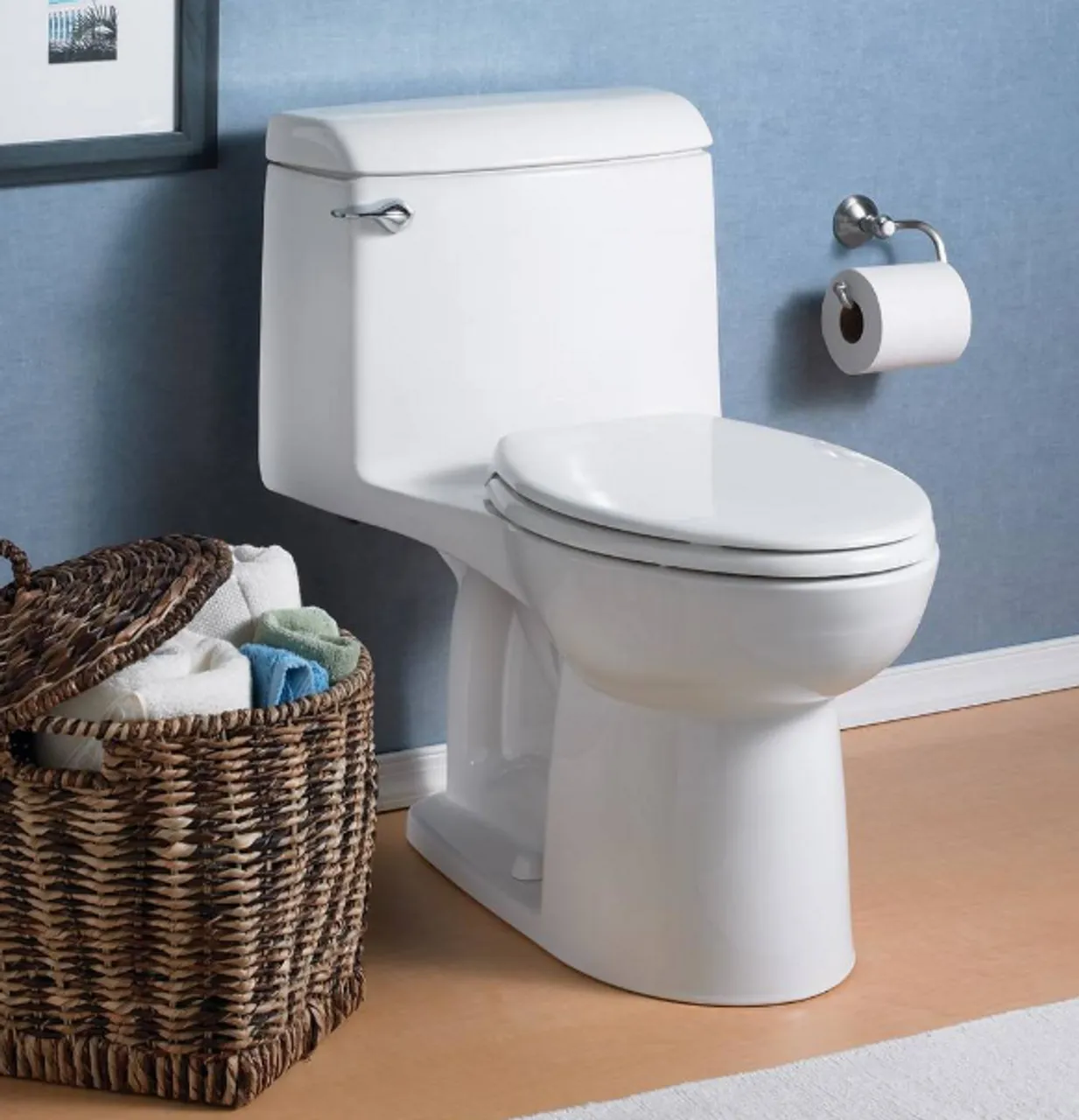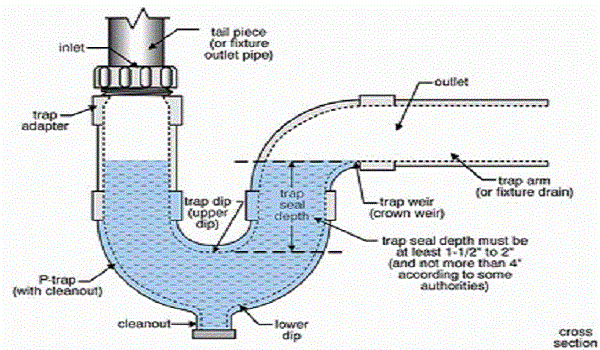A Royal Flush: Champion 4 Power, Vintage Drainage Problems

Today was a big day at the Hart house — not because of a renovation, an inspection, or some major milestone. No, today I installed a new toilet bowl in the master bathroom, and let me tell you: it’s the little upgrades that sometimes bring the biggest satisfaction.
I went with the American Standard Champion 4, and so far, it lives up to the hype. It’s often mentioned in those “can flush a dozen golf balls” videos — and while I’m not tossing Titleists down my waste line, I can say the flush power is noticeably strong.
The Flush Valve Difference
The Champion 4’s secret weapon is its 4-inch flush valve — double the size of the typical 2-inch valve found on standard toilets. What that means is faster water delivery from the tank to the bowl. More water in less time equals more power and a cleaner bowl after a single flush.
It’s a gravity-fed toilet, not pressure-assisted, so there’s no loud whooshing or risk of air bursts that sound like a jet engine firing off in the middle of the night.
Here’s the quick breakdown:
- Gravity-fed toilets use the natural force of water falling from the tank. They’re quieter, reliable, and easier to maintain.
- Pressure-assisted toilets add compressed air to force the water out. They’re powerful but loud, and more common in commercial restrooms.
For me, gravity-fed hits the sweet spot: enough power, no drama.
Chair Height vs. Standard Height
I also chose the chair height version — which is about 17 to 19 inches from floor to seat — versus the 15 inches you get with a standard bowl. That extra couple of inches makes a big comfort difference.
- Easier on the knees
- Feels more natural when sitting and standing
- ADA-compliant (a plus for accessibility and resale)
It’s a subtle upgrade that feels more significant the more you use it.
Plumbing Time Capsule: 1965 Called
Here’s the part that’s less glamorous.
The plumbing in our house is original from 1965, and it shows. The waste line is copper, and both the bathtub and toilet connect to the same horizontal drain line using a tee. What’s strange — and frankly unsettling — is that the toilet is positioned at the high point of the line. The waste pipe actually pitches away from the toilet — toward the bathtub on one side, and toward the vertical stack on the other.
Basically, the drain is shaped like an upside-down “V”, with the toilet right at the peak.
Whether this was done intentionally during construction or is the result of foundation settling over the past 60 years, I can't say for sure. But what it means in practice is that toilet waste can flow back toward the bathtub, depending on how the pipe is sloped at any given point. And yes — that's just as disgusting as it sounds.
This configuration would not pass modern plumbing code.
Reference: NYS Plumbing Code § P3005.6
“Waste lines from water closets shall not discharge into a horizontal drain that also receives waste from bathtubs or other fixtures unless properly vented and arranged.”
The way it’s arranged now, there’s a real risk of siphoning the bathtub trap, which can allow sewer gases to rise up into the bathroom. That’s why — every single day — we run the tub for a few seconds, even if nobody is bathing, just to make sure the trap stays sealed and doesn’t dry out. It’s a workaround, not a solution, but it helps keep odors and backdrafts at bay… for now.
What Would Be Code-Compliant Today?
To meet today’s plumbing standards, I’d need to:
- Re-pitch the horizontal drain so all waste flows one way, toward the main stack
- Place the toilet at the end of the branch line, not at a high point between two slopes
- Ensure the bathtub has a dedicated vent (or is properly wet-vented according to fixture sequence rules)
- Possibly cut open walls or flooring to inspect and reroute the system entirely
It’s a project I’ll have to tackle eventually, but for now, it stays on the “future renovation” list. Still, every time I flush, I think about that upside-down V... and not in a good way.

How a Plumbing Trap Works (And Why It Matters)
If you’re not familiar with how plumbing works behind the walls, you might not think twice about that bend in the drain under your sink or tub — but that little curve, called a trap, is one of the most important features in your entire plumbing system.
A trap is the U-shaped (or P-shaped) section of pipe right below a fixture. After water flows through the drain, a small amount remains in the trap, forming a water seal. This water barrier blocks sewer gases — like methane, hydrogen sulfide, and ammonia — from coming back up through the drain and into your home.
Without it, you'd have a direct open line to the sewer — and trust me, that’s not something you want.
What Can Go Wrong
If a trap dries out (like from lack of use, poor venting, or improper slope), the water seal disappears — and sewer gases can seep into your living space. That’s not just unpleasant — it can be dangerous:
- Methane is flammable and can lead to fire or explosion in high concentrations
- Hydrogen sulfide (that rotten egg smell) is toxic at high levels
- Ammonia can irritate your eyes, nose, and throat
- Even at low levels, sewer gases can trigger headaches, nausea, or dizziness
In our case, because the toilet is perched at the high point and the waste line slopes back toward the bathtub, there’s a risk that pressure fluctuations or partial clogs could siphon out the tub’s trap. That’s why we make it a point to run the bathtub daily, even for just a few seconds, to make sure the trap stays filled and sealed.
A Simple Curve with a Big Job
So while it may look like a minor detail, that little plumbing trap is doing a lot of work — quietly keeping your home safe, breathable, and odor-free. But it only works when properly vented and consistently filled. And when it doesn’t… well, that’s when problems (and smells) start to surface.
If you’ve ever noticed a musty or “off” smell around your bathroom or laundry area, there’s a good chance a dried-out trap is the culprit. Sometimes all it takes is a cup of water to reset that invisible line of defense.
Final Flush
That said, I’m really happy with the Champion 4. It looks great, works beautifully, and brings a weird amount of joy every time I walk into the bathroom. Homeownership is full of projects, but these little upgrades — especially ones that you use every single day — really add up.
Stay tuned for more home improvement wins (and plumbing war stories) from the Hart house.
— Thomas
